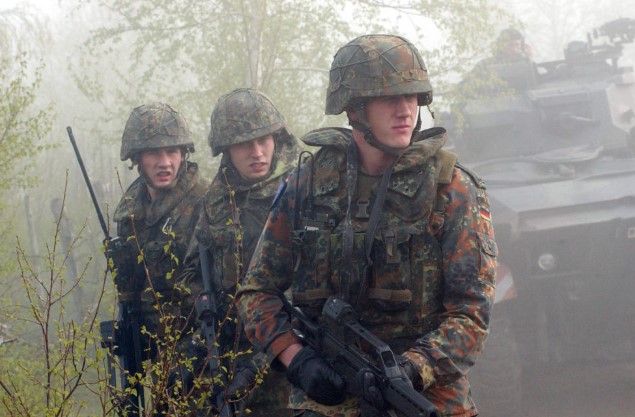Germany has once again become a central player in Europe’s security structure. Even though the Cold War ended more than three decades ago, tensions between NATO and Russia remain high. Russia’s military actions in Georgia in 2008, Ukraine in 2014, and its full-scale invasion of Ukraine in 2022 have forced NATO members to strengthen their defenses.
Germany at the Center of Europe’s Military Role Expansion
In this environment, Germany has stepped up. In 2024, it spent around US$88 billion on defense, making it the fourth largest military spender in the world. While this spending is just below NATO’s official minimum target of 2 percent of national income, it still represents a sharp increase from past years. Germany has also committed to raising its defense spending further, aiming to reach 3.5 percent of its GDP by 2029.
This is a significant change because, for decades, Germany spent far less on its military, depending heavily on the United States for protection. Now, Berlin is strengthening its own defense industry, building new equipment, and preparing to provide security not just for itself but also for its neighbors.
Germany seeks to expand circle of states giving Ukraine security guarantees after Alaska summit
Military expenditure in the past shows how important Germany can be. Between 1960 and 1991, during the Cold War, Germany spent an average of 3.3 percent of its GDP on defense. That level of spending helped maintain the balance of power in Europe.
Today, with increased threats near Russia’s borders, Germany is once again positioning itself as a country capable of supporting its neighbors. If it sustains its new commitments, it could provide military support to nearby countries like Poland, Slovakia, Hungary, Romania, Moldova, Ukraine, and the Baltic states.
Impact on NATO and Regional Security
The United States has long carried much of the responsibility for NATO’s security, but Washington has pushed European countries to contribute more. Germany’s rising defense budget addresses this concern directly.
The German military, called the Bundeswehr, has struggled with weak capabilities in the past. But with higher spending, Germany is investing in modern equipment and industries. This shift is especially important for NATO countries that share borders with Russia. Many of these states remain dependent on US protection, but Germany’s growing role gives them another strong partner in the region.
📰 22,500 Turkish Citizens Flee Economic Ruin—Germany Becomes Their Lifeline
Germany’s decision to remove limits on its debt ceiling for defense shows how seriously it is taking this task. By boosting its defense industry, it is also strengthening its economy. Defense production means jobs, innovation, and stronger industrial growth. This expansion has already started to change the way Europe views Germany—from a dependent partner to a rising security provider.
Germany Shapes India’s Opportunity in Defense Cooperation
Germany’s rising military power is not just a European matter. It also creates new opportunities for India. India and Germany already share a long history of defense cooperation. In the 1980s, German companies supported India in the design and development of the Arjun Main Battle Tank. Several systems used in the Arjun today, such as its transmission system, diesel engine, and gun control system, trace their roots to German technology.
The Indian Navy has also benefitted from German expertise. Between 1986 and 1994, India received German-built submarines of the Shishumar class. These submarines are still serving the Navy and are expected to remain active for at least another decade. Germany’s shipbuilding expertise continues to play a role, with Thyssenkrupp Marine Systems partnering with Indian dockyards to build advanced submarines under Project 75I. These submarines will include Air Independent Propulsion systems, boosting their endurance underwater.
Beyond submarines and tanks, German companies have also partnered with Indian firms to develop advanced munitions. A recent agreement with India will see the domestic production of precision-guided 155mm Vulcano munitions. These long-range weapons can strike with high accuracy, and the deal is valued at around US$1.1 billion.
🌍 Germany slams China’s border tactics — calls out aggressive moves in Asia-Pacific
Such partnerships help India reduce reliance on Russian platforms and gain access to advanced technology. Germany is ready to collaborate through joint ventures, sharing design and production tasks, which lowers costs and spreads risks. India can add skilled labor and manufacturing capacity, while Germany provides advanced systems.
Challenges exist, such as German export controls and its defense ties with Pakistan. Still, projects like submarine development and precision munitions show strong cooperation. Beyond buying equipment, India supports German manufacturers with skilled workers, while also strengthening its own defense industry and diversifying hardware sources.

